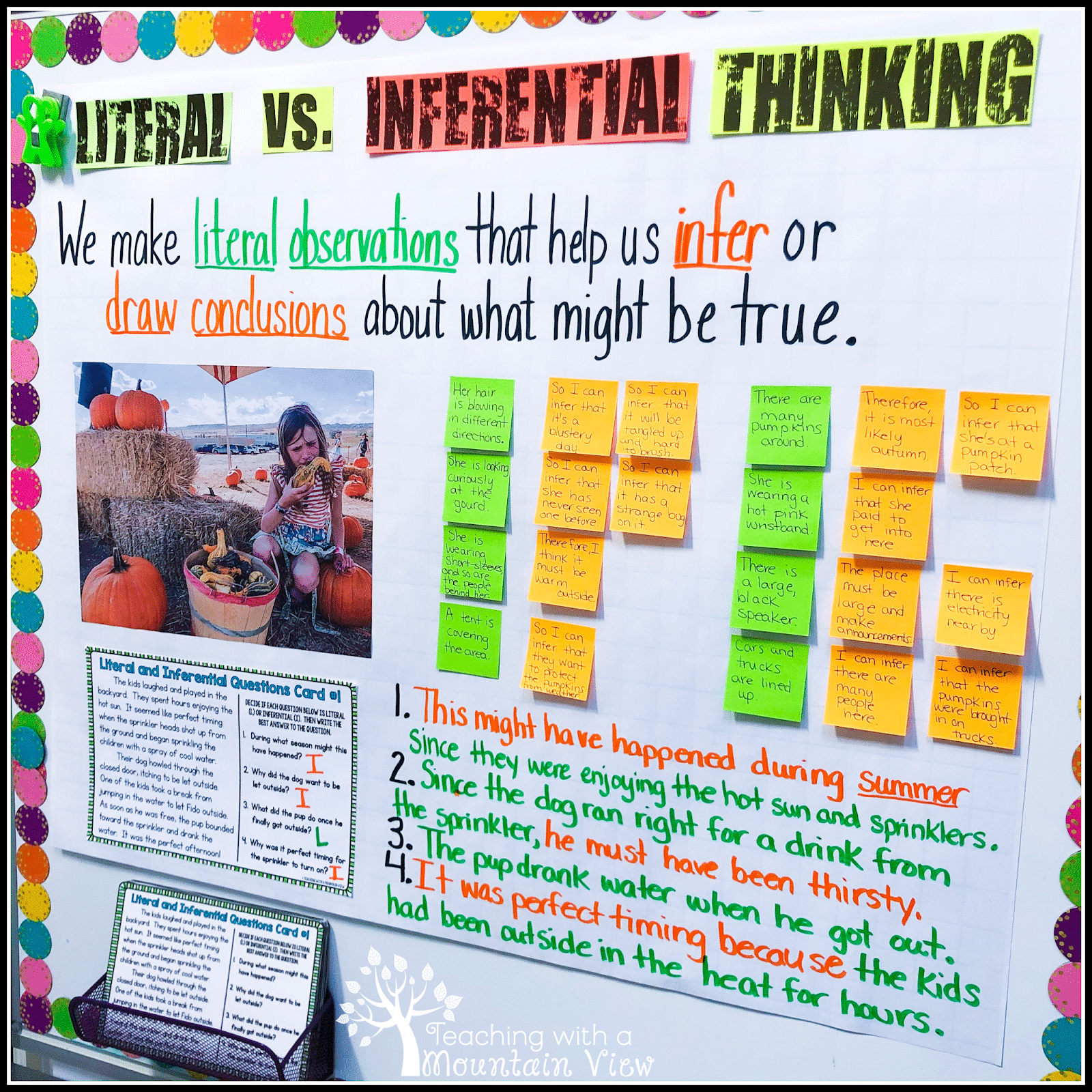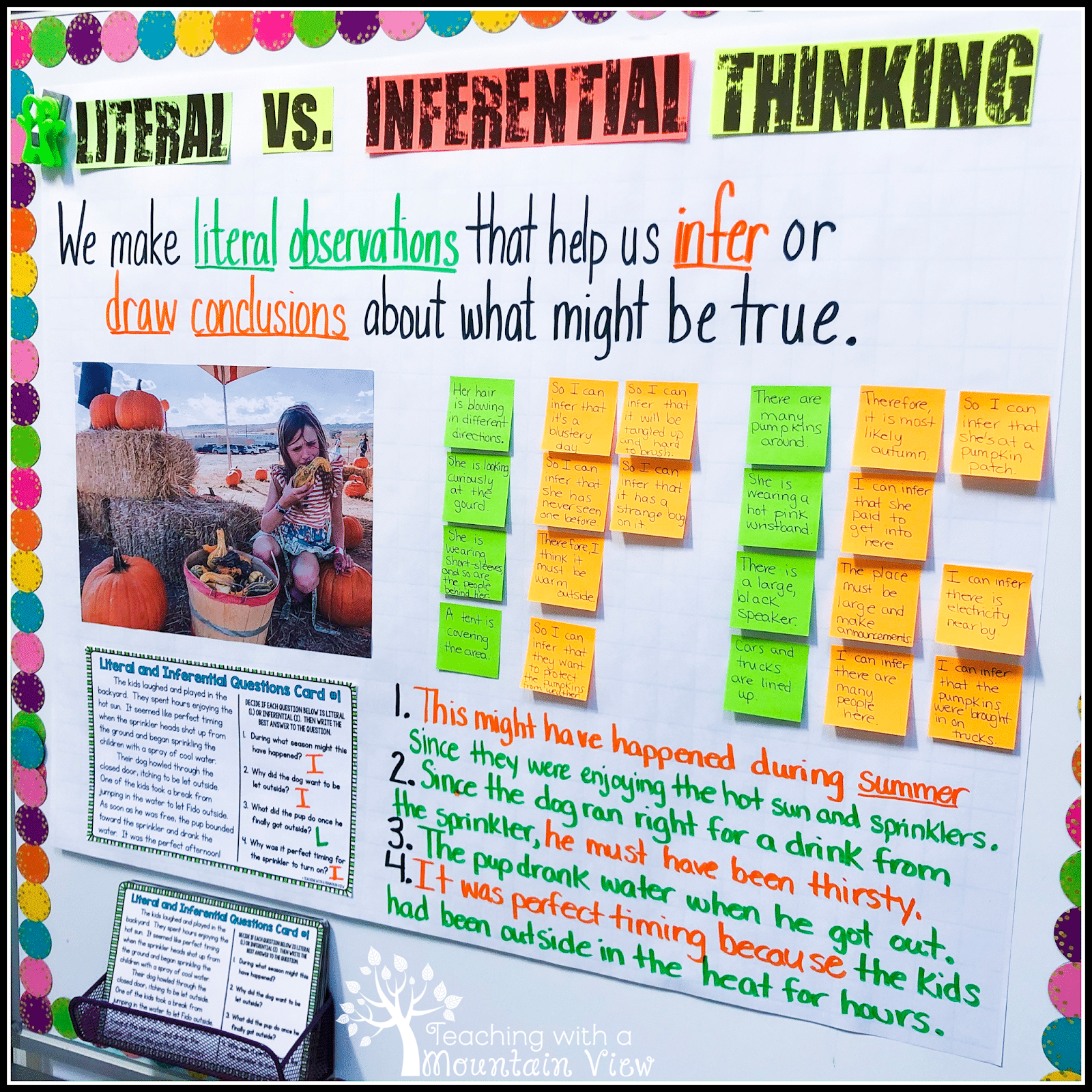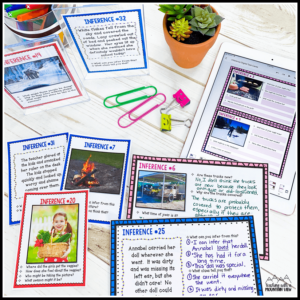Teaching Students To Use Observations to Infer
By Mary Montero
Share This Post:

If you’ve ever tried to teach students the concept of making inferences, you know this is never a simple task! That’s why I have always taught my students how to tell the difference between literal and inferential questions and observations. I’ve written extensively about this in the past, but I have a new inference anchor chart and free lesson for you if you are just getting started, or if your students need more practice with this!
Inference Anchor Chart
You may remember THIS post about how I teach my students the difference between literal and inferential observations or THIS post that dives into using pictures to teach. This is not a one and done skill! I find a way to reinforce inference ALL YEAR LONG.
This lesson and anchor chart are similar concepts to those I’ve shared before, but it scaffolds it even more for students who need more explicit instruction. It’s also a great way to introduce those two lessons because it even more explicitly teaches inference than those do!
The inference anchor chart above really speaks for itself. I start by explaining to my students that our literal observations (what’s right there) help us make inferences. Then, we use the green sticky notes to brainstorm as many literal observations as we can about the picture. After that, we discuss as a group some inferences we can make based on those literal observations. Soon, students realize that they are actually inferring ALL the time! It’s a great lightbulb moment. It’s also great for them to see that you can infer multiple conclusions from the same observation (and that not all inferences are right all the time).
I also made a free inference printable for you to use with your students to reinforce this skill. You can download it (which also includes the picture I used in our anchor chart) for free HERE.
Inference Activity
Then, we use one of my literal and inferential text task cards as a whole group to apply this skill to text. We color code our answers again so that they can see how we must use our observations in order to make an inference.
You can also use these Inference Task Cards for additional practice!
I hope that gives you one more idea about how you can use pictures to teach inference, especially to students who don’t understand the concept the first time around. Be sure to reference those two posts I mentioned above so that you know where to go AFTER this!
Mary Montero
I’m so glad you are here. I’m a current gifted and talented teacher in a small town in Colorado, and I’ve been in education since 2009. My passion (other than my family and cookies) is for making teachers’ lives easier and classrooms more engaging.













